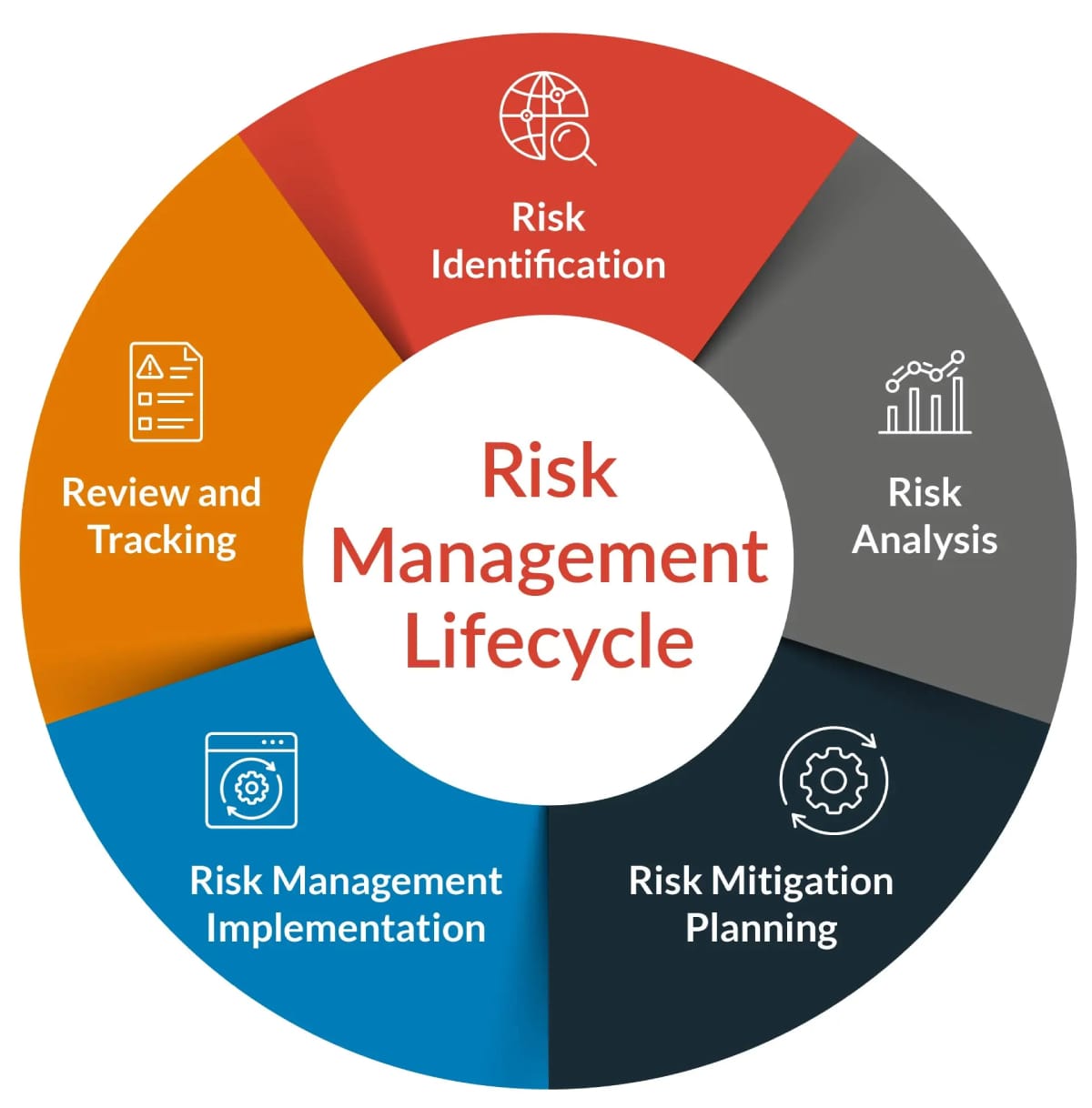5 Key Benefits of Business Financial Planning

Business financial planning is more than just a set of financial statements and projections; it's a comprehensive process that shapes the course of a company's future. The ability to plan and adapt financially is not just an advantage but a necessity. Whether it's a startup seeking to carve out its niche or an established enterprise aiming to expand its market share, financial planning lays the foundation for informed decision-making and strategic growth.
The significance of financial planning cannot be overstated. It equips business leaders with the insights needed to navigate market uncertainties, capitalize on opportunities, and mitigate risks. By understanding and managing cash flow, forecasting financial performance, and setting realistic budgets, companies can steer their operations toward profitability and long-term success.
In this article, we explore the five key benefits of business financial planning: improved decision-making, enhanced business growth, effective risk management, better financial understanding, and the achievement of long-term goals. Each of these benefits plays a crucial role in building a resilient and thriving business, underscoring the importance of a well-structured financial plan.
Benefit 1: Improved Decision-Making

The quality of decision-making can often determine the trajectory of success or failure. Financial planning serves as a beacon, guiding decision-makers through the fog of operational and strategic choices. This section explores how financial planning enhances decision-making by providing clarity, reducing uncertainty, and enabling proactive management.
Clarity in Financial Health
At its core, financial planning offers a clear view of a company's current financial health. By meticulously documenting and analyzing financial data, such as income, expenses, assets, and liabilities, businesses can obtain a comprehensive understanding of their financial position. This clarity is crucial for making informed decisions, whether it's about pursuing new ventures, optimizing operations, or managing cash flow.
Reducing Uncertainty
Business is fraught with uncertainty, from fluctuating market trends to changing consumer behaviors. Financial planning helps in reducing this uncertainty by forecasting future financial outcomes based on historical data and market analysis. These forecasts enable businesses to anticipate changes and adapt their strategies accordingly. For instance, if projections indicate a downturn in cash flow, a company can preemptively cut costs or seek financing, thereby avoiding potential financial distress.
Proactive Management
Financial planning empowers businesses to be proactive rather than reactive. Through regular financial review and analysis, companies can identify potential issues before they escalate into serious problems. This proactive approach extends to exploring new opportunities. For example, financial analysis may reveal the potential for expanding into a new market or investing in innovative technologies. By making these decisions based on solid financial planning, businesses can seize opportunities with confidence, knowing their actions are grounded in sound financial rationale.
Case Studies and Examples
Let's consider a case study that illustrates the impact of improved decision-making through financial planning. A mid-sized manufacturing company, facing declining sales, used financial planning to analyze its cost structure and market trends. This analysis revealed an opportunity to pivot to a more profitable product line and streamline operations, resulting in a significant turnaround in profitability.
Similarly, a tech startup used financial planning to navigate its early growth phase. By forecasting cash flow and funding needs, the startup was able to make timely decisions about when to scale operations and when to seek additional investment, ultimately leading to a successful market expansion.
Improved decision-making, facilitated by business financial planning, is not merely about avoiding financial pitfalls; it's about strategically navigating the business towards its goals. Financial planning provides the data-driven insights needed for making informed choices, reducing uncertainty, and capitalizing on opportunities. For business owners and financial planners, embracing this aspect of financial planning is key to steering their companies toward success and sustainability.
Benefit 2: Enhanced Business Growth

Financial planning is a critical driver of business growth, providing the framework within which companies can pursue expansion strategies with confidence and clarity. This section will discuss how financial planning aids in identifying growth opportunities, optimizing resource allocation, and ensuring sustainable expansion.
Strategic Growth Initiatives
A well-structured financial plan serves as the backbone for strategic growth initiatives. It enables businesses to set clear objectives, prioritize investments, and allocate resources effectively. By analyzing financial data, companies can identify lucrative areas for expansion—be it new markets, product lines, or customer segments. Financial planning also helps in setting realistic timelines for growth initiatives, ensuring that expansion efforts are aligned with overall business objectives and financial capabilities.
Resource Optimization
Growth often requires significant investments in resources, such as capital, labor, and technology. Financial planning plays a vital role in optimizing the use of these resources, ensuring that investments are made judiciously and with a clear understanding of their potential return. This includes budgeting for new projects, forecasting cash flow to support expansion activities, and evaluating the financial viability of hiring additional staff or investing in new technologies. Through meticulous planning, businesses can maximize their growth potential while maintaining financial stability.
Sustainable Expansion
One of the most challenging aspects of business growth is ensuring that it is sustainable over the long term. Financial planning aids in this by providing a framework for monitoring growth initiatives against established benchmarks and adjusting strategies as necessary. This includes assessing the impact of expansion on cash flow, profitability, and debt levels. By continuously evaluating these financial metrics, businesses can make informed decisions that promote sustainable growth, avoiding over-expansion or other financial risks that could jeopardize long-term success.
Case Studies and Examples
Consider the example of a retail company that used financial planning to successfully expand its online presence. By analyzing market trends and financial data, the company identified e-commerce as a significant growth opportunity. Financial planning enabled the company to allocate resources efficiently, investing in a robust online platform and digital marketing strategies that significantly increased its market reach and sales.
Another example is a manufacturing firm that leveraged financial planning to expand its operations internationally. Through detailed financial analysis, the firm identified high-potential markets and planned its entry strategy, including budgeting for new production facilities, distribution networks, and local marketing efforts. This strategic approach to financial planning facilitated a smooth and successful international expansion, driving substantial revenue growth.
Enhanced business growth is a direct outcome of strategic financial planning. By providing the tools to identify opportunities, optimize resources, and ensure sustainable expansion, financial planning empowers businesses to grow in a calculated and effective manner. For entrepreneurs and business leaders, investing time and resources in financial planning is not just a best practice; it's a fundamental strategy for achieving long-term growth and success.
Benefit 3: Risk Management

Effective risk management is essential for any business aiming to secure its operations and ensure long-term viability. Financial planning is at the heart of this process, providing the tools and insights needed to anticipate, evaluate, and navigate the myriad risks that businesses face today.
Identifying Risks
The first step in risk management is identifying potential risks that could impact the business. Financial planning facilitates this process through thorough financial analysis and scenario planning. By examining financial statements, cash flow projections, and market trends, businesses can uncover potential financial risks, such as liquidity issues, credit risks, and market volatility. Additionally, financial planning helps identify operational risks related to supply chain disruptions, technological changes, and regulatory compliance.
Assessing Risks
Once risks are identified, assessing their potential impact on the business is crucial. Financial planning provides a framework for evaluating the severity and likelihood of identified risks. This involves analyzing financial data to understand how different risks could affect profitability, cash flow, and overall financial stability. For example, by conducting sensitivity analyses, businesses can estimate the financial impact of a significant market downturn or a sudden increase in production costs.
Mitigating Risks
With a clear understanding of the risks and their potential impacts, businesses can then devise strategies to mitigate these risks. Financial planning is instrumental in this phase, guiding the allocation of resources to risk mitigation measures. This could include diversifying revenue streams to reduce dependency on a single market, enhancing liquidity to manage cash flow risks, or investing in insurance policies to protect against catastrophic events. Financial planning also supports the establishment of contingency funds and the development of business continuity plans to ensure operations can withstand unexpected disruptions.
Leveraging Financial Planning for Proactive Risk Management
An integral part of risk management is the ability to be proactive rather than reactive. Financial planning enables businesses to take a forward-looking approach to risk, incorporating risk management strategies into their overall business planning. This proactive stance not only helps in mitigating immediate risks but also in building resilience against future uncertainties.

Case Studies and Examples
A notable example of effective risk management through financial planning is a global logistics company that faced significant risks from fluctuating fuel prices. By incorporating fuel price forecasts into its financial planning and implementing fuel surcharges, the company was able to mitigate the financial impact of this volatility on its operations.
Another example involves a technology firm that used financial planning to navigate the risks associated with rapid technological obsolescence. By allocating a portion of its budget to research and development, the company ensured continuous innovation, maintaining its competitive edge and mitigating the risk of its products becoming outdated.
Risk management is a critical component of business success, and financial planning is its cornerstone. By identifying, assessing, and mitigating risks, businesses can protect themselves against potential threats, ensuring stability and promoting long-term growth. Financial planning not only helps in navigating current risks but also in preparing for future challenges, making it an indispensable tool for any business committed to sustainability and success.
Benefit 4: Better Financial Understanding

A profound understanding of financial metrics and performance indicators is fundamental for steering a business towards its strategic goals. Financial planning plays a key role in demystifying these metrics, enabling business owners, managers, and stakeholders to make more informed decisions. This section discusses how financial planning enhances financial literacy within an organization, contributing to its overall health and success.
Enhancing Financial Literacy
Financial planning involves the regular analysis of financial statements, including the balance sheet, income statement, and cash flow statement. By engaging with these documents, stakeholders gain insights into the company's financial health, such as profitability, liquidity, and solvency. Financial planning educates stakeholders about key financial metrics like gross margin, net profit margin, current ratio, and debt-to-equity ratio, among others. This enhanced literacy allows for a deeper understanding of how operational decisions impact the financial well-being of the business.
Aligning Operational Performance with Financial Goals
One of the primary advantages of a better financial understanding is the alignment of day-to-day operations with the company's financial goals. Financial planning makes this possible by setting benchmarks and performance indicators that departments and individuals can aim for. Regular financial reviews and planning sessions help to keep everyone focused on the financial targets, encouraging behaviors and decisions that contribute positively to the company's financial performance.

Empowering Decision-Making at All Levels
With a better grasp of financial concepts and metrics, employees at all levels are empowered to make decisions that positively impact the bottom line. For example, a department manager with a clear understanding of budgetary constraints and financial objectives is more likely to make cost-effective choices in resource allocation. Similarly, sales teams aware of profit margins can tailor their strategies to prioritize high-margin products or services.
Case Studies and Examples
A practical example of the benefit of better financial understanding can be seen in a small manufacturing business that implemented regular financial training for its managers. As managers became more literate in reading financial reports, they identified areas where cost savings could be made without compromising product quality. This led to a significant improvement in the company's gross margin, directly attributable to better financial decisions at the managerial level.
Another example comes from a service-based company that included financial performance indicators in its employee performance reviews. This approach motivated employees to consider the financial impact of their actions, leading to a culture of cost-consciousness and efficiency that improved the company's overall financial health.
Better financial understanding, fostered by comprehensive financial planning, is a cornerstone of successful business management. It not only enhances financial literacy among stakeholders but also aligns operational activities with financial objectives, empowering informed decision-making throughout the organization. As businesses strive to navigate the complexities of the modern economic landscape, the value of financial planning in promoting a deep understanding of financial metrics and performance indicators cannot be overstated.
Benefit 5: Achieving Long-Term Goals

Long-term goal achievement is the hallmark of successful businesses, distinguishing those that thrive from those that merely survive. Financial planning is the linchpin in this process, providing a structured approach to setting realistic goals, tracking progress, and making adjustments as necessary. This section discusses how financial planning aligns business strategies with long-term objectives, ensuring a clear path to success.
Setting Measurable and Achievable Goals
The first step in achieving long-term goals is to define them clearly and ensure they are measurable and achievable. Financial planning facilitates this by helping businesses analyze their current financial situation, project future performance, and set specific, quantifiable objectives. Whether it's expanding market share, increasing revenue by a certain percentage, or achieving a specific return on investment, financial planning turns abstract aspirations into concrete targets.
Aligning Strategies with Financial Objectives
Once goals are set, financial planning aids in aligning business strategies with these financial objectives. This involves allocating resources efficiently, prioritizing investments, and adjusting operations to support the strategic direction. Financial planning ensures that every decision made and every dollar spent contributes towards achieving the long-term goals, creating a coherent strategy that weaves through the fabric of the business.
Monitoring Progress and Adapting Strategies
Achieving long-term goals is not a set-and-forget process; it requires ongoing monitoring and adaptation. Financial planning provides the framework for tracking progress against goals, using financial metrics and performance indicators as benchmarks. Regular financial reviews allow businesses to identify deviations from the plan early and make necessary adjustments. This adaptability is crucial in a dynamic business environment, where changes in market conditions, competition, and technology can impact the path to achieving long-term goals.
Case Studies and Examples
An illustrative example is a technology firm that set a long-term goal of becoming a market leader in its niche within five years. Through meticulous financial planning, the firm identified key investments in research and development, targeted marketing strategies, and strategic partnerships that aligned with its financial objectives. Regular financial reviews and adjustments to the plan enabled the firm to navigate market changes effectively, ultimately achieving its goal within the projected timeline.
Achieving long-term goals is the essence of strategic business planning, and financial planning is the critical tool that makes this possible. By setting clear, measurable objectives, aligning strategies with financial goals, and adapting to changes proactively, businesses can chart a course towards sustained growth and success. Financial planning is not just about managing numbers; it's about realizing visions and fulfilling aspirations, ensuring that businesses not only envision their future but also have a practical roadmap to reach it.
Final Thoughts
The journey through the five key benefits of business financial planning reveals its undeniable value in building a resilient and thriving business. It's clear that effective financial planning is not merely a financial exercise but a strategic imperative that influences every aspect of business operations. For those looking to secure their business's future, financial planning is the beacon that illuminates the path to success, guiding decisions, and strategies with the precision and foresight necessary for enduring prosperity.
Embracing financial planning is, therefore, not just advisable; it's essential for any business committed to achieving its goals and surpassing its potential.
Key Takeaways
| Key Benefits | Key Takeaways |
|---|---|
| 1. Improved Decision Making | - Provides critical data for informed decision making. - Enhances clarity on financial health. - Reduces uncertainty through financial forecasting. - Enables proactive management of operations and strategy. |
| 2. Enhanced Business Growth | - Supports strategic growth initiatives. - Identifies lucrative areas for expansion. - Optimizes resource allocation for maximum growth potential. - Ensures sustainable expansion through careful planning and monitoring. |
| 3. Effective Risk Management | - Identifies potential financial and operational risks. - Assesses the severity and likelihood of risks. - Mitigates risks through strategic planning and resource allocation. - Promotes a proactive approach to risk management. |
| 4. Better Financial Understanding | - Enhances financial literacy among stakeholders. - Aligns operational performance with financial goals. - Empowers decision-making at all levels with a clear understanding of financial metrics. - Fosters a culture of financial awareness. |
| 5. Achieving Long-Term Goals | - Sets clear, measurable, and achievable long-term objectives. - Aligns business strategies with financial objectives. - Enables monitoring of progress and adapting strategies as necessary. - Provides a roadmap for sustained growth and success. |





